Jacques Tourneur’s “Cat People” (1942) is one of those black and white horror movie discoveries that only added to my lifelong movie obsession.
Here is an unabashed B-movie, one of many from Hungarian producer Val Lewton, that suggests so much from its pulpy title and delivers, in place of cheap thrills, a suggestive, highly psychological, and thoughtful exploration of human character.
Lewton made other films with Tourneur (“I Walked With a Zombie” is among their most famous), but the sinister, dreamlike feel of “Cat People” has me revisiting it at least once a year. I’ve subjected my film classes to it every semester, with most students balking at the film’s subtlety, while others would connect to it on a deeper, more personal level.
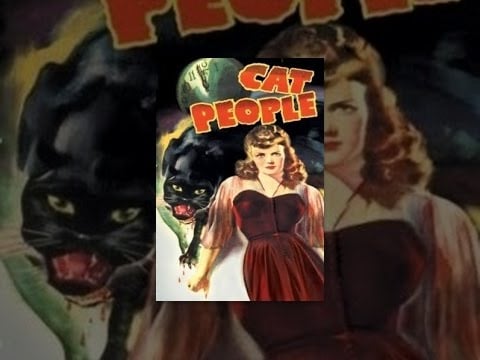
Tourneur’s “Cat People” stars the hypnotic, lovely Simone Simon as Irena, seen drawing a caged panther in a zoo. She befriends Oliver (Kent Smith), who is understandably smitten with her.
After a brisk courtship, Oliver proposes they marry. While Irena is taken by Oliver and initially unthreatened by his chemistry with Alice (Jane Randolph), Oliver’s friend and work partner, Irena’s gradual jealousy creates tension within the three.
A far more troubling problem is that Irena, a Serbian in New York, believes that she comes from tribe of Cat People, who turn into panthers when sexually aroused and murder anyone with whom they mate.
This detail is explained in the most chaste way possible for a film from 1942.
Nevertheless, “Cat People,” on a subtextual level, is about the fear of sex and how sexual intimacy turns us into animals. The film is also a psychological puzzle, as Irena’s questionable state of mind and some visual clues allow us to ponder if her belief in the Cat People is ludicrous or plausible.
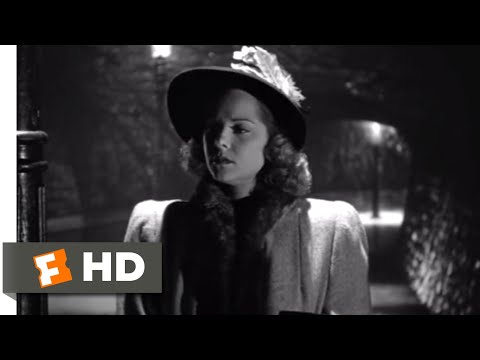
While “Cat People” is a horror film, it positions its heroine as both the potential villain and, if looked at another way, a victim of her husband’s lack of understanding and empathy.
Tourneur’s “Cat People” is among the most influential films of its genre, with its rich ambience, use of sound and shadow and emphasis on sexual longing and repression. It’s a terrific film.
Paul Schrader’s 1982 remake is strikingly similar to the original in terms of the basic story and recreates its most famous sequences but provides a different and not altogether successful experience.
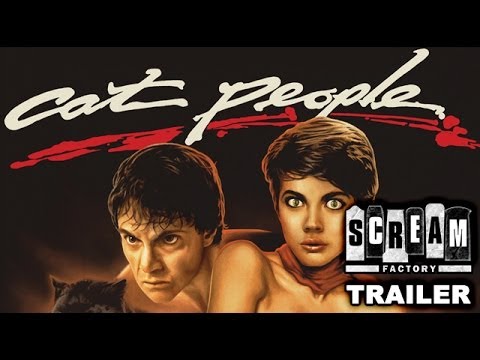
It opens with visuals akin to a child’s fairy tale illustration (or, perhaps, an image right out of the 1944 horror-lite, child’s fantasy-like sequel, “The Curse of the Cat People”).
Rather than allow the suggestion of Tourneur’s film and indulge in the mystery of whether the title characters are real, Schrader’s film literalizes the lore of the Cat People. The prologue is intense and beautiful, courting ridicule and mostly avoids it.
Pushing in on lead Nastassja Kinski’s eye as her character introduction was a sharp choice. Set in New Orleans, Kinski’s Irena meets her brother, Paul (alcolm McDowell, a decade after “A Clockwork Orange”) at the airport. The reunion is affectionate, though it later leans in the direction of incest, as Paul not only declares himself as one of the Cat People to Irena but also explains that only they could mate, as sex with a human would result in one person transforming into a leopard and the other ending up dead.
Irena becomes attracted to a zookeeper named Oliver (John Heard), though his professional relationship with Alice (Annette O’Toole) presents Irena with a romantic rival.
RELATED: Why Horror Remakes Are Doomed to Fail
Schrader’s “Cat People” is peculiar and eerie. At one point early on, Kinski is walking through the zoo and nearly runs into a peacock, a moment that might either be an accident or just knowingly peculiar.
Kinski’s Irena has an otherworldly presence to match Simon’s, but the emphasis on psychological mystery, unrequited love and sexual aching made the journey of the original Irena far more compelling. The 1982 “Cat People” takes too long to set up the love triangle and prolongs the inevitable in the third act.
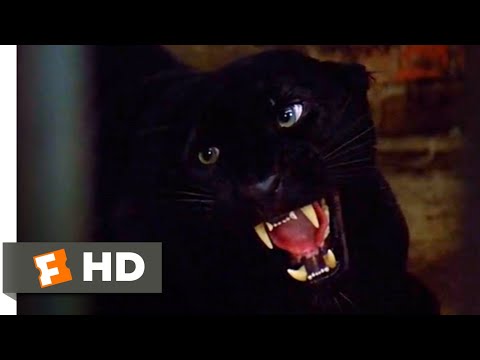
Having the original focusing on a love triangle between a sophisticated couple and an outsider, whose social abnormalities make her an awkward fit in their circle, proved masterful. Here, Heard and O’Toole as zookeepers is an easy, uninspired choice.
They’re zookeepers, get it? They want to keep Irena’s wildness in a cage.
The triangle in the original wasn’t so on-the-nose. As good as O’Toole is in this, Randolph’s scene-stealing turn as a sophisticated and frank co-worker infatuated with Smith’s Oliver was, likewise, a more gripping dynamic.
There are visual and audio pleasures in Schrader’s film, as Giorgio Moroder’s cool score and David Bowie’s intoxicating single “Putting Out the Fire with Gasoline” are obvious highlights.
Tourneur’s style, with his shadowy, insinuating black and white imagery, is very different from Schrader’s film, with its striking lighting design.
Overall, the comparisons aren’t favorable: in the original, a well-regarded scene has Irena running into another of the Cat People, as a separate woman with a feline appearance sees her in a restaurant, says “Moi esestra” (“my sister” in Serbian) and runs off, a chilling moment.
It’s recreated in the ’82 version with a similar figure casually saying to Irena, “Mi Hermana,” which doesn’t have the same effect.
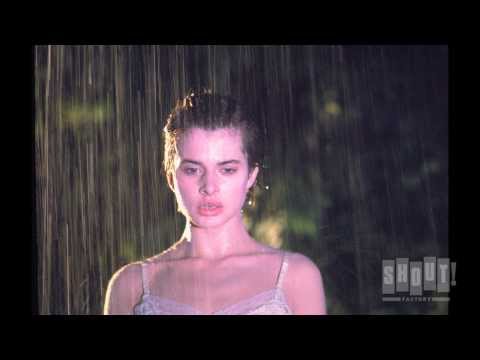
The original has a walk n’ stalk sequence that is still scary, with the sudden appearance of a bus pulling up with a hiss as an effective jump scare. In the ’82 version, the moment falls flat. Likewise, the new version of the swimming pool scene, now only notable for the nudity. “Cat People” is better served psychological than literal.
It’s odd but true that the original, despite being 50 years older, still has this one beat.
Hungarian producer Lewton specialized in low-budget psychological thrillers that could be sold on the basis of their name but offered far more than cheap thrills. Whereas Tourneur had Lewton, Schrader has Jerry Bruckheimer.
If anything, the emphasis on imagery and music is a reflection on Bruckheimer, who at this point was best known for his involvement in the music industry. Not for nothing, what most people tend to remember about Schrader’s “Cat People” is David Bowie’s ”Putting Out the Fire” and not much else.
On this day in 1983, David Bowie released Let’s Dance. Thanks to the title song, as well as “Modern Love,” “China Girl,” and “Cat People (Putting Out Fire),” it sold 12 million copies worldwide, making it Bowie’s best-selling album. pic.twitter.com/cTHGQpsFMr
— Eric Alper
(@ThatEricAlper) April 14, 2022
The gore in Schrader’s film is vivid and gross but all the rich subtext and psychological explorations, of the sin waiting beneath Irena’s skin, are now made literal. Schrader’s film naturally goes further than Tourneur’s, but carrying an R-rated has not made for an improved vision.
“Cat People” easily surpasses Schrader’s prior directorial effort, the over-praised “American Gigolo” from 1980 (which has aged terribly). However, Schrader’s other horror entry, the deeply troubled “Dominion: Prequel to The Exorcist” (2005), which is thought provoking but feels unfinished, is a stronger work than his “Cat People.”
The final scene, presenting a quasi-solution for Irena, is kind of kinky, kind of tragic but mostly an anticlimax.
In a body of work that includes adapting “The Last Temptation of Christ” and writing “Taxi Driver” for Martin Scorsese and (to name just a few) directing “Blue Collar” (1978), “Patty Hearst” (1988) and “First Reformed” (2017), anything Schrader does deserves our attention and willingness to take a walk along his always challenging tight rope.
Schrader’s “Cat People” is one of those movies I return to every five years or so, in hopes that I’ll like it better or see something I previously overlooked. I find the film intriguing and entertaining, but Tourneur’s film, which I watch once a year, is definitive.
Whichever version you see first, these two films, separated by 40 years, offer rich contrasts in approach while telling the same story. Both films are, under the surface, about the fear of sex, presented as a grownup fairy tale about how, really, we’re all cat people, just holding back the impulse to scratch.
The post Why the Original ‘Cat People’ Trumps the R-rated Remake appeared first on Hollywood in Toto.
from Movies – Hollywood in Toto https://ift.tt/CodM7kT

No comments:
Post a Comment